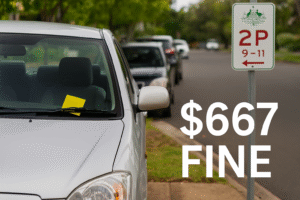Recent reforms to Australia’s aged care system, particularly the Support at Home program and changes in co-payment structures, have sparked concern among advocates and older Australians. These reforms—intended to modernize the system—may inadvertently place greater financial burden on elderly people who wish to stay in their own homes.
This article outlines the proposed changes, the potential impact on older Australians, criticisms and safeguards, and what affected individuals should watch out for.
What’s Changing: Support at Home & Co-Payments
| Reform Component | What It Means | Implication for Older Australians |
|---|---|---|
| Support at Home program | From 1 November 2025, a unified home care scheme replacing the Home Care Packages and Short-Term Restorative Care programs. | Greater complexity in transitions; existing recipients will be “grandfathered,” but newcomers must accept new rules. |
| Co-payments for non-clinical care | Tasks like showers, laundry, cleaning will no longer be fully subsidized; recipients will be required to contribute between 5% and 50% (for “independence” tasks) or up to 80% (for “daily living” tasks), depending on income/assets. | Some older Australians may struggle to afford basic services and may cut back on essential supports. |
| Waiting list and delays | Over 200,000 older Australians are waiting for home care packages; some waiting even for assessment. | Many will remain without support for months or years, forcing either reduced service or earlier residential care. |
| Hardship assistance | Provisions exist for financial hardship relief for those unable to pay. | Helps some people, but qualifying criteria may exclude many vulnerable individuals. |
Why Critics Call This “Planning Hardship”
- Increased Out-of-Pocket Costs
Many older Australians may now pay for services previously provided for free or heavily subsidized. For example, a part-pensioner or self-funded retiree might pay $50/hour for personal care (like help with showers) and even more (≈ $75/hour) for domestic tasks. - Equity Concerns
Co-payments are means-tested. However, those just above the thresholds may pay hefty amounts, penalizing moderate-income elders. - Risk of Reduced Access
When users are required to pay more, some may forgo needed services. Basic care is not optional for many—choosing between showering or buying food is no choice at all. - Systemic Strain and Delays
The transition relies on a new IT system and new administrative structures. Delays and implementation issues risk leaving many older Australians without services or clarity well past the official rollout date (delayed from 1 July to 1 November).
Safeguards, Protections & What’s Included
- No worse off guarantee
Existing home care recipients are promised they will not be financially worse off under the new system. - Hardship assistance
For those who cannot afford care due to exceptional circumstances, a hardship scheme is available, though eligibility is limited. - Clinical care remains fully subsidized
Changes apply only to non-clinical services; things like nursing, physical therapy, and clinical tasks are fully covered by the government. - Transitional protections
Current recipients transition automatically without needing reassessment, and unspent funds in existing packages carry over.
What Older Australians Should Do Now
- Review your current home care package
Understand what services you receive and potential changes under Support at Home. - Check your income/assets
Estimate how much you may have to contribute based on your financial situation. - Watch for communications from your provider
Providers should contact clients about transitioning and service changes ahead of November. - Consider applying early
If you anticipate needing more services in future, applying early may secure your place before demand surges. - Seek hardship relief if needed
If payments become unaffordable, know the application criteria and process for financial hardship assistance. - Advocate & stay informed
Engage with consumer advocacy groups, aged care advocacy networks, and local representatives to voice concerns.
FAQs
Will I have to pay for my shower and hygiene help?
Possibly. Under the new co-payment regime, “personal care” (like showering) may require contributions from 5% to 50% depending on income and assets.
If I already have a home care package, will my costs go up?
You’re protected by the “no worse off” guarantee — you should not be worse off financially.
What qualifies for hardship relief?
To be eligible, you typically must have limited assets, not have gifted large sums recently, and show that after essential expenses you have less than a certain threshold left.
When do these changes start?
Support at Home and associated reform begin from 1 November 2025, after a delay from the originally planned July date.



